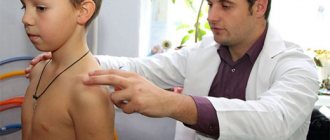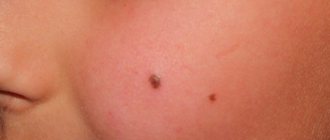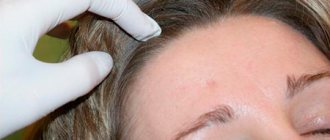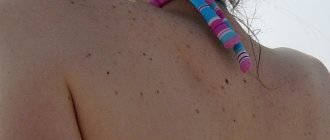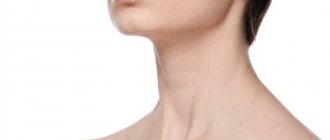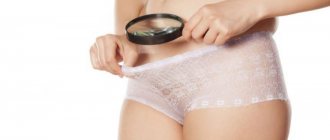A wart is an unpleasant benign (most often) neoplasm on the skin, of viral etiology, resembling a small papilla or nodule. For many, it is a serious cosmetic defect that spoils the appearance.
However, not everyone suspects that this is also an independent disease that requires certain treatment. Usually localized on the hands and feet, but sometimes warts appear on the face , which is a particular problem for the fair sex.
Removing these bumps is long and difficult, and therapy requires extreme caution so as not to leave marks (scars, redness, spots, etc.). To avoid side effects and unnecessary complexes, you should promptly seek help from cosmetology and (or) dermatology, which can offer various ways to eliminate this scourge in the shortest possible time. But first of all, you need to figure out where these bumps come from in order to prevent their occurrence in the future.
Reasons for appearance
The main reasons for the appearance of warts on the face should be sought in the activation of papillomavirus infection or human papillomavirus. Its penetration into the human body occurs under the influence of several factors. One of the most common is tactile contact with a carrier of the virus or through touching things that he wore or personal items. For example, a wart on the lip may occur as a result of the following circumstances:
- kiss;
- shaking hands with an HPV carrier;
- use of personal hygiene products for an infected person;
- oral sex;
- orally from mother to child.
Under the influence of these factors, a wart can also form on the forehead and other parts of the face. Harmful microbes penetrate through microcracks and scratches on the skin, but do not manifest themselves immediately. For a long time, the papillomavirus lies dormant, activating only under favorable conditions. Such favorable factors include:
- weakened immunity, stress;
- prolonged stay of a person in nervous tension, psychological trauma;
- disruption of the functioning of higher centers of the autonomic nervous system;
- acrocyanosis;
- increased fat content of the skin;
- presence of ENT diseases;
- frequent colds;
- poor quality cleansing of the skin on the face;
- restructuring of the body during age-related changes (adolescence, pregnancy, menopause).
Bumps on the face quite often appear in old age. This is due to the weakening of the body under the influence of natural aging processes. At the same time, it cannot cope with harmful external and internal influences, as a result of which the risk of developing skin tumors increases. In addition, failure to comply with personal hygiene standards also provokes the development of skin pathologies. Knowing the reasons for the formation of warts on the face, you can successfully resist this, excluding unfavorable provoking factors.
Treatment of warts with folk remedies
When a wart appears, many people wonder whether it is possible to remove it on the face at home? Yes, but with great caution, all responsibility for the consequences falls on you.
Folk remedies need to wipe the tumor, for example, tea tree oil, onion juice, castor or linseed oil. Sometimes such treatment helps, but you don’t need to rely on it 100%.
Types of warts
Most often, condylomas appear in the form of single growths of the epidermis, which, if left untreated, can grow, spreading over large areas of the skin. An increase in epidermal growths leads to their fusion, which complicates treatment. In addition, some types of tumors that are not treated in a timely manner are characterized by atypical tissue growth, which can provoke cancer.
The following types of warts are most often visualized in the facial area:
- ordinary (vulgar). They appear as small round growths with a rough surface, often pink in color. The most common area of localization is the back of the hands, but cases of formation on the face are not uncommon;
- flat warts on the face. They are characterized by an irregular or rounded nodular shape. They arise as a result of injury to the skin, the formation of scratches and cracks on it, most often formed in adolescence;
- dry. The formation of growths occurs as a result of keratinization of skin cells affected by papillomavirus. If moisture and suppuration of the tubercle are visualized, the characteristic cause of this condition is damage to the growth with infection. In this case, you should immediately consult a doctor;
- senile. Warts that are not characterized by a viral nature of origin. Most often they occur on the skin of older people after 60 years of age. They look like dark brown or black keratinized flat spots or plaques;
- genital warts. They appear as small thread-like pink warts that grow together into one whole, forming a single stalk. Rarely appear on the face;
- small. They are characterized by the presence of a single head, rising above the skin, and accumulate multiple times in a certain area of the skin;
- red. Redness of the wart means the presence of an inflammatory process inside the formation, which requires immediate therapeutic action;
- thread-like (hanging). Neoplasms are characterized by the presence of a single head hanging from the skin;
- viral neoplasms that are exclusively viral in origin;
- big. Manifest in the form of fusion of two or more filamentous condylomas into one growth;
- white warts on the face. Characterized by the absence of melanocytes in their structure, they are considered a skin pathology.
If there are doubts about the nature of the neoplasm on the face, it is recommended to study photos of the growths, comparing them with papillomas. The presented classification gives only an approximate idea of the nature of neoplasms; only a doctor can make an accurate diagnosis.
Therefore, to establish an accurate diagnosis and prognosis for possible treatment, it is better to consult a specialist (dermatologist).
How to identify a neoplasm?
Formations on the skin in the form of warts come in different appearances , and it is impossible to find a single description.
Common types of warts are spinules (neoplasms covered with scales on top, and black dots of blood vessels visible in the depths). The spines hurt when pressed and itch if left alone. Often small ones spread around one main spine, and if the main one is removed, the small ones will disappear the same way.
A spine is a growth on the skin in the form of a wart: photo.
Also common are flat warts of the “classic” type, which are low dense growths, up to 5 mm, and oval in shape, and are covered with horny cells on top. This formation of warts usually does not hurt, except when pressing hard on them, and does not itch, unlike spines.
Common growths on the skin in the form of warts: photo.
Symptoms and diagnosis
The development of pathology can be determined by the corresponding symptoms:
- A small tubercle is visualized on the skin, its surface is smooth, even, and small in size. After some time, corresponding neoplasms are noticed in neighboring areas of the skin.
- The configuration of the neoplasm can be either smooth, round, or chaotically growing. Shades can be different (from pink to dark brown, red, yellow).
- Upon palpation, a solid structure is felt (except for thread-like formations).
- There is no pain when pressing on the wart.
- As they grow, the surface of the growths becomes bumpy and rough.
In most cases, a wart on the eye or other area of the face does not pose a health threat unless it tends to grow rapidly. However, depending on the etiology of the neoplasm, it may degenerate into a malignant tumor. In such cases, it is recommended to carry out medical treatment, including surgery, as quickly as possible.
Before making such a decision, doctors conduct a comprehensive diagnosis, including:
- general examination of the formation using a magnifying device;
- biomicroscopy of the epithelium of the affected area;
- biopsy of skin lesion.
Only after drawing up an accurate clinical picture is the optimal treatment prescribed.
Similar, but not the same
Looks like a wart, but not a wart - what could it be?
- The first type of such growths are keratomas . These are dark, flat growths that usually form in old people, which is why they are called “senile warts.” But the reasons for their formation are different - solar radiation, which affects a person throughout his life. With large doses of solar radiation, these formations can appear at an earlier age.
- The second type is moles . They are often brown in color, but not always. There are also pink, flesh-colored moles. These are called vascular moles, and they look almost like warts. A sign that allows you to distinguish such moles can be based on the surface: moles do not have horny scales on it .
- Calluses can also form on the feet , which can also be easily confused with neoplasms. The reason for their appearance is mechanical irritation . Only a doctor can help determine whether a formation on the skin is a wart or a callus.
- Finally, acne can look like warts , but they can be easily distinguished by their pink or red color. Acne occurs due to the fact that the sebaceous glands produce too much oil , which clogs the pores. Laundry soap is the best medicine.
Moles and other dark-colored growths can turn into cancer if they are cut off or if you try to cure them yourself using inappropriate means.
Removal methods
The presence of pathological growths on open areas of the skin brings significant psychological discomfort to carriers of the anomaly. In addition, some types of neoplasms pose a health hazard, pose a threat to life, and have a tendency to continuously grow. For example, a growing wart under the eye can cause blurred vision, more serious pathologies, even complete blindness. Therefore, there is a natural desire to get rid of the pathology.
Many people are interested in how to get rid of warts on the face?
There are several treatment methods that help eliminate skin pathologies:
Traditional
Removing a wart on the face in the traditional way involves the following techniques:
- Laser therapy is considered the most effective method of getting rid of growths on the face. Using a laser, you can bloodlessly remove a growth on any part of the body, even if the wart is in the mouth;
- The radio wave method involves converting electricity into radio waves, after exposure there is no trace left at the site of the pathology;
- electrocoagulation is an effective method for the bloodless removal of warts on the skin and mucous membranes, for example, if there is a growth in the larynx area. During the procedure, it is possible to take a tissue sample for histological examination;
- the surgical method is used in the absence of effect from drug therapy;
- cryodestruction involves exposing the wart to liquid nitrogen;
- exposure to chemical substances on tumors.
Medication
Answering the question of how to remove a wart on the face using conservative therapy, we can say that antiviral drugs, immune agents, tablets, ointments, and injections are used for this.
The most effective antiviral drugs for removing flat warts on the face are:
- Panavir;
- Allokin;
- Isoprinosine.
The most popular immunomodulators:
- Roncoleukin;
- Polyoxidonium;
- Immunal;
- multivitamins.
You can effectively and quickly remove a wart on the face using Vishnevsky ointment, as well as other external means:
- 5-fluorouracil;
- Aldara (cream based);
- Vartek (cream);
- Viferon, Rheodoxol (in the form of ointments);
- Oxolinic ointment;
- Panavir gel.
How does a build-up form?
A growth in the form of a wart is formed under the influence of papillomavirus , which causes skin cells to mutate. The affected cells grow uncontrollably, divide and crowd neighboring cells, and also cause the wart to grow upward.
The formation appears as a small bump. Then it grows, its surface first shiny with stretched skin. Over time, the stretched skin is replaced by a rough surface, which is formed by dead horny cells.
Smaller warts then form around the central wart, which may disappear if the main wart is treated.
There is no need to try to cut out the tumor with a thread yourself or to cauterize the wart:
- Supercleaner;
- hydrogen peroxide;
- iodine;
- garlic;
- celandine;
- acetic acid;
- or a cigarette.
Warts can be removed in a variety of safe and effective ways:
- radio waves;
- liquid nitrogen;
- laser;
- surgical scalpel;
- and other clinical methods.
Possible complications and precautions
Sometimes it is not worth removing the formation. When exposed to the drug, pathological processes are triggered. Consult your doctor; the growth may not be something to worry about.
It is easier to prevent the development of formations than to deal with the consequences and eliminate the growth. Prevention of the appearance of warts with a blackhead consists of following the rules of personal hygiene, especially for the legs and feet, where they are most often localized. Excessive sweating of feet in shoes provokes the spread of the virus. Reduced immunity contributes to the activation of the virus. Try to eat more vitamin-containing foods and avoid contact with people with HPV.
The papilloma virus is difficult to cure. By seeking help in a timely manner, you will prevent the virus from going into remission. Old warts can be removed without consequences, and new ones will not appear. The skin will be clean again without unpleasant growths.
The article has been reviewed by the site editors
How does cold affect hanging warts?
Cryotherapy is a kind of freezing of pathological tissues. This is an alternative to laser destruction, coagulation with chemicals and cauterization with high frequency current. To apply liquid nitrogen, use a wooden stick with a ball of cotton wool, a special applicator or tube through which a low-temperature substance is supplied.
The hanging growth, cooled with liquid nitrogen, freezes and its tissues become necrotic. Small papillomas disappear on the same day or after a few days. The procedure may need to be repeated for larger tumors.
Prevention
In order to prevent the appearance of such neoplasms, certain rules should initially be followed. These conditions are similar to all keratosis treatment methods.
- You should not get carried away with tanning . It is necessary to use protective creams and give preference to light-colored clothing. You should not sunbathe at critical times - from 10 am to 4 pm.
- It is necessary to saturate the body with vitamins . Both medications and a varied diet will help here.
- Proper nutrition . Animal fats not only increase cholesterol levels, but also contribute to the development of keratomas.
- A healthy lifestyle will improve immunity, metabolism, and protective functions of the body. Which in turn will prevent the risk of getting sick.
- Reducing the amount of stress will also have an extremely positive effect on your health.
- Adequate sleep is one of the fundamental factors affecting human health.
Growths on the face are not only unsightly, not aesthetically pleasing, but can be a signal that some changes are taking place in the human body. Moreover, some types are a dangerous sign. Before deciding to remove formations that spoil the appearance, it is better to consult a dermatologist to find out their nature.


